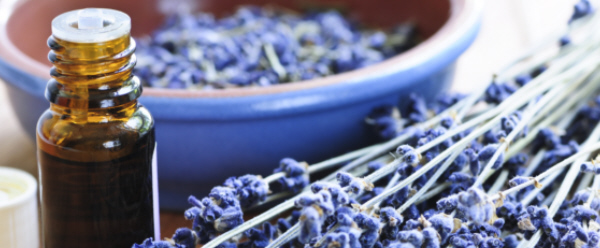Enchanting Aromas
by Angela England and Linda Bertaut
Nature heals in many ways. Most of us have felt the sense of renewal that comes from walking through a garden filled with fragrant flowers, or sitting under a massive tree, shaded from the burning rays of the sun. Indigenous peoples worldwide believe that each plant has a spirit we can communicate with, to ask for their help in healing.
You can tap into “plant spirit” by keeping aromatic plants around your home or wherever you spend time. Whether fresh or dried, herbs and plants can delight the senses and offer varied health benefits.
Choosing Favorites
Here are some popular herbs, as well as their purported health benefits. When choosing your favorites, take a few minutes to breathe in the scents and try to identify what the aroma does for you. Caution: If you have plant allergies, some herbs may cause a reaction.
Chamomile: Euphoric–Soothes nerves, aids digestion, and improves appetite. Good for circulation to the surface of the skin. Induces perspiration. Good as an overall tonic.
Jasmine: Magical–Helps menopause symptoms. Antibacterial, antioxidant, and aphrodisiac. May lower bad cholesterol when used in teas.
Lavender: Healing–Calming and sedative. Relieves anxiety, depression, and exhaustion. Helps with digestion, headaches, and skin problems. Antiseptic, antibiotic, and a natural detoxifier.
Lemon Balm: Joyful–A member of the mint family, it was used for centuries to treat melancholy. Soothes the nerves and helps with indigestion. May be used topically to reduce redness and swelling.
Peppermint: Uplifting–Calms the stomach and helps with digestion. Increases secretion of bile. Antifungal, highly nutritive, and can alleviate symptoms of allergies and asthma.
Red Clover: Cleansing–Blood purifier, sedative, and good for the nerves. May be used topically to help acne, psoriasis, and skin sores.
Rose Hips: Fortitude–High in vitamin C and bioflavonoids. Antioxidant. Also contains vitamins A and B, essential fatty acids, and lycopene.
Rose Petals: Beautiful–Antibacterial, antidepressant, and aphrodisiac. Rose water is beneficial to the skin.
Rosemary: Awakening–Highly nutritive, with vitamins A, C, and B complex. Boosts the immune system. Antifungal,anti-inflammatory, antioxidant, and antiseptic.
Sage: Wisdom–Grounding. Antibacterial and astringent. Helps with digestion; good as a gargle for sore throats; relieves sore gums; helps reduce hot flashes. Can be used as a rinse to darken grey hair.
Growing Your Own Herbs
In addition to having these wonderful herbs surround you, there can be an additional cost-saving benefit with growing them yourself. Fresh basil can cost more than $4 for a small sprig, while a $1 packet of seeds will provide fresh basil for the summer months, as well as enough basil to dry and use in the autumn and winter. Plus, you can find varieties of basil via seed you simply can’t purchase otherwise (think lemon and even chocolate basil), creating a one-of-a-kind experience for pennies on the dollar.
Other herbs that grow easily from seed include chamomile, lemon balm, sage, and thyme. Some herbs, however, do not grow well from seeds, including lavender, lemon verbena, and mint. Lavender, though, is an economical plant in another way–it is a perennial plant that will come back year after year, such as rose, sage, and thyme. Here are some growing tips that are especially helpful if you’re working with a small space:
Choose containers carefully. Plants that enjoy quick-draining soil, like lavender and chamomile, grow well in traditional containers. Plants like basil, roses, and strawberries that need more consistent watering will benefit from a self-watering container.
Grow up! Use plant stands, ladders, or shelves to elevate containers to different levels if you don’t have a lot of space for your garden. Trellises or fences can be used to grow climbing plants vertically as well. Cucumbers and climbing roses grow vertically and can become useful and beautiful backdrops in otherwise wasted spaces.
Do double duty Most businesses or homes have landscaping already. It is easy to replace existing ornamental-only plants with those that will serve a double duty. Rosemary is a semi-evergreen shrub that can take the place of dwarf conifers in some landscapes and climates. Alpine strawberry can replace other small, flowering plants like coreopsis, phlox, or vinca. Thyme and mint make great ground covers and can serve as a living mulch, while fragrant roses in place of other large, ornamental shrubs provide additional plant material for you to use.
Angela England is the author of Backyard Farming on an Acre (More or Less) and founder of www.untrainedhousewife.com, she stays busy empowering others to live more intentionally.
Linda Bertaut is an author, esthetician, Reiki Master, and award-winning beauty expert. She founded Bertaut Beauty and Chakralicious to help professionals add wellness therapies to their menu of services.

